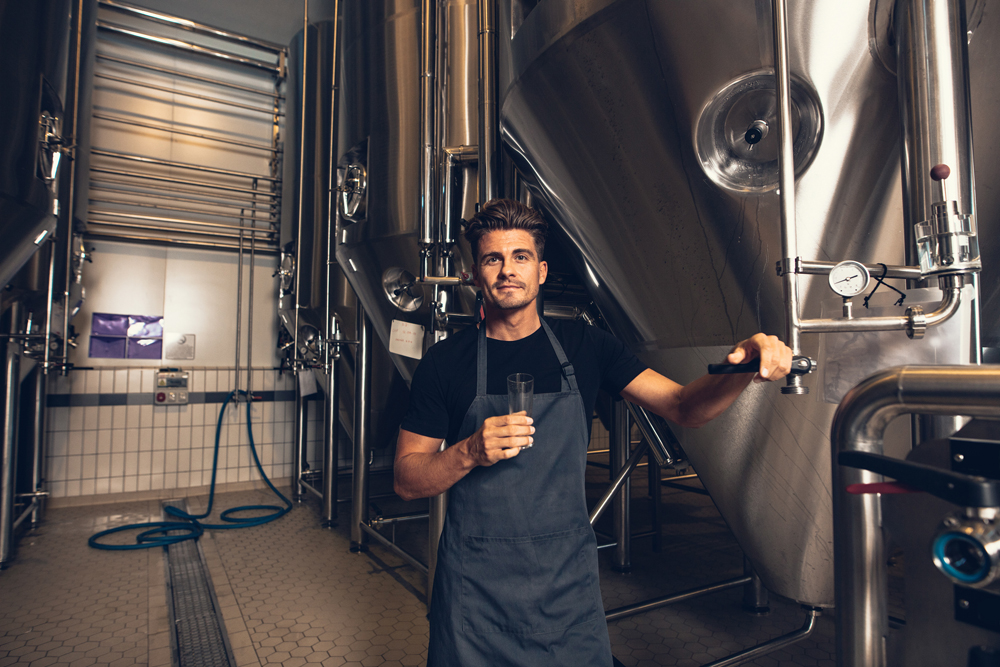
America’s Love Affair With Craft Beer
Microbrewery Business is Hopping…
Jane A. Callen and Andrew W. Hait
In Virginia’s Loudoun County, a booming and affluent exurban community about 30 miles outside of Washington, D.C., 10 of the 12 breweries in business in 2016 opened their doors since 2012.
All of them can be defined as “craft breweries”, small and independent businesses that combine traditional brew styles with innovative ingredients.
Loudoun County is not alone. Almost 400 counties that had at least one brewery in 2016, did not have any in 2012. Every one of the 50 states and just over a quarter of the nation’s 3,143 counties have at least one brewery.
Across the United States, the craft brewery business is hopping. In one five-year period, the number of breweries more than tripled and the most growth happened in small, craft-brewery establishments that have fewer than 50 employees.
Brew Business Booming Nationwide
According to the County Business Patterns program, between 2012 and 2016 (the most recent available data), the total number of breweries skyrocketed from 880 to 2,802. Of that total, 2,605 had 49 or less employees.
These small businesses employed over 55,000 workers with a total annual payroll of $2.6 billion.
Keep in mind that this data only includes businesses classified as “breweries.” Businesses that brew their own beer (restaurants and brew pubs) but are classified in other industries which are excluded from these statistics. If these other businesses had been included, the number and growth over the last five years would be even greater.
States Where the Beer is Flowing
Not a single U.S. state saw a decline in the overall number of breweries between 2012 and 2016.
In 2016, the states with the highest number of breweries were: California (368), Colorado (204), Washington (162), New York (152) and North Carolina (129). These states also saw the greatest increase in the number of new establishments.
States that had the largest growth in breweries between 2012 and 2016 were: West Virginia, Wyoming, Mississippi, South Dakota and Arkansas.
What’s on Tap in Counties
There was significant brewery expansion at the county level.
The top five of these “new brewery counties” were: Clark County, Wash. (+13); Adams County, Colo. (+6); Will County, Ill. (+6); Hampshire County, Mass. (+6); and Monmouth County, N.J. (+6).
The animated map below shows the change in the number of breweries by county from 2005 to 2016.
The five counties that have the most breweries and their growth since 2012:
- San Diego County, Calif. (73 breweries, up 306 percent).
- King County, Wash. (53 breweries, up 165 percent).
- Angeles County, Calif. (51 breweries, up 467 percent).
- Cook County, Ill. (40 breweries, up 344 percent).
- Denver County, Colo. (39 breweries, up 388 percent).
- Giving People What They Want
Bart Watson, chief economist for the Brewers Association, thinks the trend toward smaller breweries is largely demand-driven. Consumer taste is shifting and support for local businesses is rising.
“It is similar to the trend toward specialty coffee,” Watson said. “We are also seeing it in distilleries and wineries.”
Watson uses Census Bureau data in his work for the Brewers Association, such as single-year age demographics of the population age 21 and over.
In some states and counties, microbreweries have opened soon after state and local government regulations changed.
Virginia, for example, began allowing breweries to sell their brands for consumption both on- and off-premises in 2012. The legislation also allows breweries to offer samples of their products to drink on the premises. Since then, the number of breweries increased statewide from 21 to 98 in 2016.
The strong, noncompetitive support in the craft brewery community can also contribute to growth in this industry. When brewers need information or advice, they can turn to other breweries through networks such as the Virginia Craft Brewers Guild and the Pink Boots Society, an organization of women in the industry.
How Does The Census Bureau Know So Much About Craft Breweries?
Detailed information on the nation’s businesses are only possible when U.S. businesses complete the surveys the Census Bureau conducts.
Note: The estimates of the value of the products sold or services provided are based on a scientifically selected sample of establishments and are therefore subject to sampling error. To view the measures of sampling error for these data, see New Mexico fast food data or Grocery Store product lines data.
Jane A. Callen is a Senior Editor/Writer and Andrew W. Hait is a Survey Statistician/Economist at the U.S. Census Bureau.






